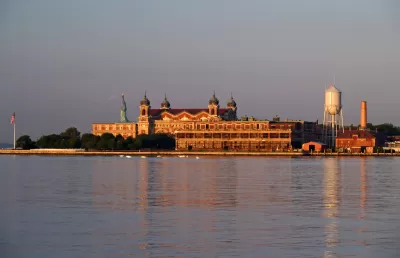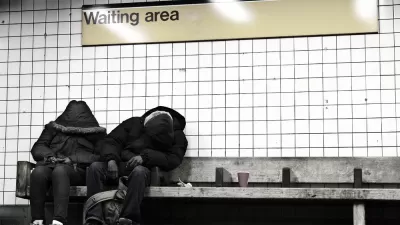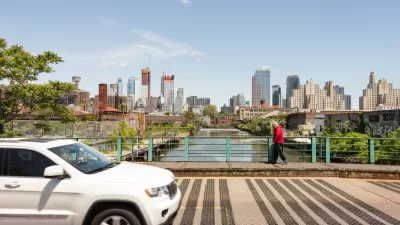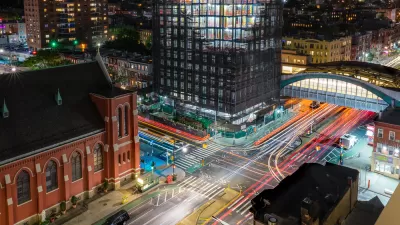The Adams administration in New York City will relax the review process for homeless shelters to create new space for arriving asylum seekers.

New York Mayor Eric Adams signed Executive Order 406 on May 15, temporarily suspending rules in the city’s Uniform Land Use Review Procedure, New York City’s version of the development approval process, to reduce the review process for siting, leasing, constructing, and operating new homeless shelters.
According to the executive order, the mayor’s decision to relax the city’s approval process for homeless shelters comes in response to the arrival of asylum seekers in the city. “[T]he City now faces an unprecedented humanitarian crisis that requires it to take extraordinary measures to meet the immediate needs of the asylum seekers while continuing to serve the tens of thousands of people who are currently using the DHS Shelter System,” according to the executive order.
Elizabeth Kim reports the news of the executive order in an article for Gothamist. The city’s shelter system is “at or near capacity,” according to city officials and aid workers cited in the article.
“The city previously suspended its lengthy land use review process for the building of emergency relief centers, which are designed to serve as temporary housing for migrants,” reports Kim. “But as part of the new order, the city will now include homeless shelters in that exemption.”
“The suspension of rules — known as the Uniform Land Use Procedure or ULURP — means that the city will not be required to hold hearings or submit to any of the typical approvals or recommendations involved in land use approvals,” adds Kim.
Kim also reports that the Adams administration is considering 20 school gyms as possible shelter sites.
FULL STORY: Mayor Adams suspends NYC review process for building shelters as more migrants arrive

Study: Maui’s Plan to Convert Vacation Rentals to Long-Term Housing Could Cause Nearly $1 Billion Economic Loss
The plan would reduce visitor accommodation by 25,% resulting in 1,900 jobs lost.

North Texas Transit Leaders Tout Benefits of TOD for Growing Region
At a summit focused on transit-oriented development, policymakers discussed how North Texas’ expanded light rail system can serve as a tool for economic growth.

Using Old Oil and Gas Wells for Green Energy Storage
Penn State researchers have found that repurposing abandoned oil and gas wells for geothermal-assisted compressed-air energy storage can boost efficiency, reduce environmental risks, and support clean energy and job transitions.

Private Donations Propel Early Restoration of Palisades Playground
Los Angeles has secured over $1.3 million in private funding to restore the Pacific Palisades playground months ahead of schedule, creating a modern, accessible space that supports community healing after recent wildfires.

From Blight to Benefit: Early Results From California’s Equitable Cleanup Program
The Equitable Community Revitalization Grant (ECRG) program is reshaping brownfield redevelopment by prioritizing projects in low-income and environmental justice communities, emphasizing equity, transparency, and community benefits.

Planting Relief: Tackling Las Vegas Heat One Tree at a Time
Nevada Plants, a Las Vegas-based nonprofit, is combating the city’s extreme urban heat by giving away trees to residents in underserved neighborhoods, promoting shade, sustainability, and community health.
Urban Design for Planners 1: Software Tools
This six-course series explores essential urban design concepts using open source software and equips planners with the tools they need to participate fully in the urban design process.
Planning for Universal Design
Learn the tools for implementing Universal Design in planning regulations.
Ascent Environmental
Borough of Carlisle
Institute for Housing and Urban Development Studies (IHS)
City of Grandview
Harvard GSD Executive Education
Toledo-Lucas County Plan Commissions
Salt Lake City
NYU Wagner Graduate School of Public Service





























